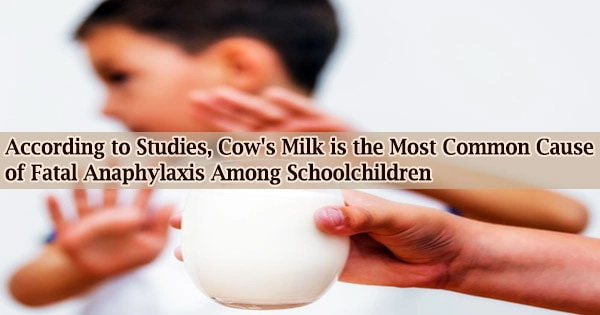Over a 20-year period, the number of hospital admissions in the UK owing to a major allergic reaction (anaphylaxis) triggered by food has more than tripled. Despite this, according to a study published today in The BMJ, the fatality rate from food-induced anaphylaxis has decreased by half over the same time span.
The most prevalent cause of potentially life-threatening allergic reactions, known as anaphylaxis, is a food allergy. Globally, there have been significant increases in hospital admissions owing to food anaphylaxis, although it is unclear whether this trend is continuing, and if so, whether this has resulted in an increase in deadly events.
Researchers from Imperial College London’s National Heart & Lung Institute set out to describe time patterns for hospital admissions due to food anaphylaxis in the UK over the last 20 years in order to learn more about this.
They looked at data from 1998 to 2018, comparing reported deaths with time trends, age, and sex distributions for anaphylaxis admissions due to food and non-food triggers.
101,891 persons were admitted to hospitals for anaphylaxis between 1998 and 2018. Thirty thousand admissions (30%) were categorized as being caused by a dietary trigger.
From 1998 to 2018, the annual rate of food anaphylaxis admissions grew by 5.7 percent, from 1.23 to 4.04 per 100,000 population.
Cow’s milk is increasingly identified as the culprit allergen for fatal food reactions, and is now the commonest cause of fatal anaphylaxis in children. More education is needed to highlight the specific risks posed by cow’s milk to people who are allergic to increase awareness among food businesses.
Children under the age of 15 years old saw the greatest rise in hospital admissions, jumping from 2.1 to 9.2 per 100,000 population per year (an annual increase of 6.6 percent, compared with 5.9 percent in people aged 15-59 years and 2.1 percent in those aged 60 years and older).
152 deaths were discovered during a 20-year period in which the fatal event was most likely caused by food-induced anaphylaxis.
For confirmed deadly food anaphylaxis, the case fatality rate (number of fatalities as a percentage of hospital admissions) declined from 0.7 percent to 0.19 percent, and for suspected fatal food anaphylaxis, it went from 0.7 percent to 0.3 percent.
Peanuts or tree nuts were involved for at least 86 (46%) of all deaths in school-aged children between 1992 and 2018, while cow’s milk was linked for 17 (26%) deaths.
Prescriptions for adrenaline autoinjectors climbed by 336 percent over the same time period, an increase of 11 percent each year, according to the data.
Improvements in the recognition and management of anaphylaxis, according to the researchers, could explain why the case fatality rate has decreased despite increased hospital admissions for anaphylaxis.
They add that there is no evidence that the clinical criteria used to identify anaphylaxis in the UK have changed during the study period. Despite the introduction of national recommendations by the National Institute for Health and Care Excellence (NICE) in 2011, which may have resulted in an increase in hospitalizations, the year-on-year growth has continued since then.
The authors note that some cases of anaphylaxis may have been incorrectly recorded or misdiagnosed, and that they were unable to include cases of anaphylaxis seen in emergency rooms that did not require hospital admission.
Nonetheless, they employed a national dataset in the context of the UK health system, which allowed them to draw solid results that could be compared to other nations.
As such, the researchers conclude: “Cow’s milk is increasingly identified as the culprit allergen for fatal food reactions, and is now the commonest cause of fatal anaphylaxis in children. More education is needed to highlight the specific risks posed by cow’s milk to people who are allergic to increase awareness among food businesses.”
They add: “Further work is needed to assess the evidence for an age related vulnerability to severe anaphylaxis in young adults, therefore improving our ability to risk stratify patients with food allergies and to reduce the risk of fatal outcomes.”





